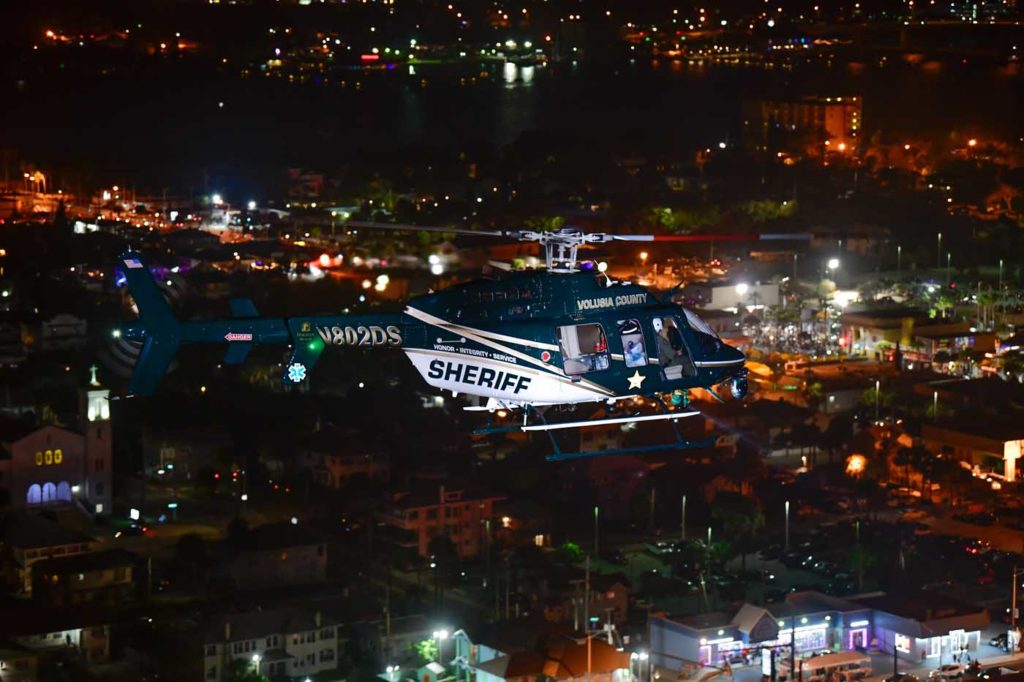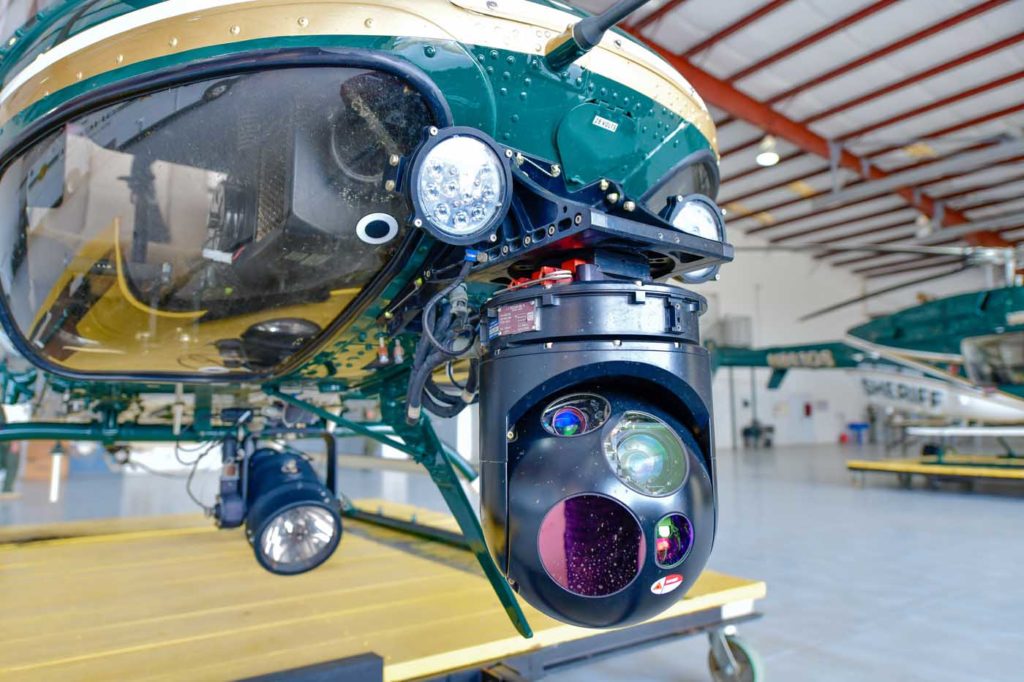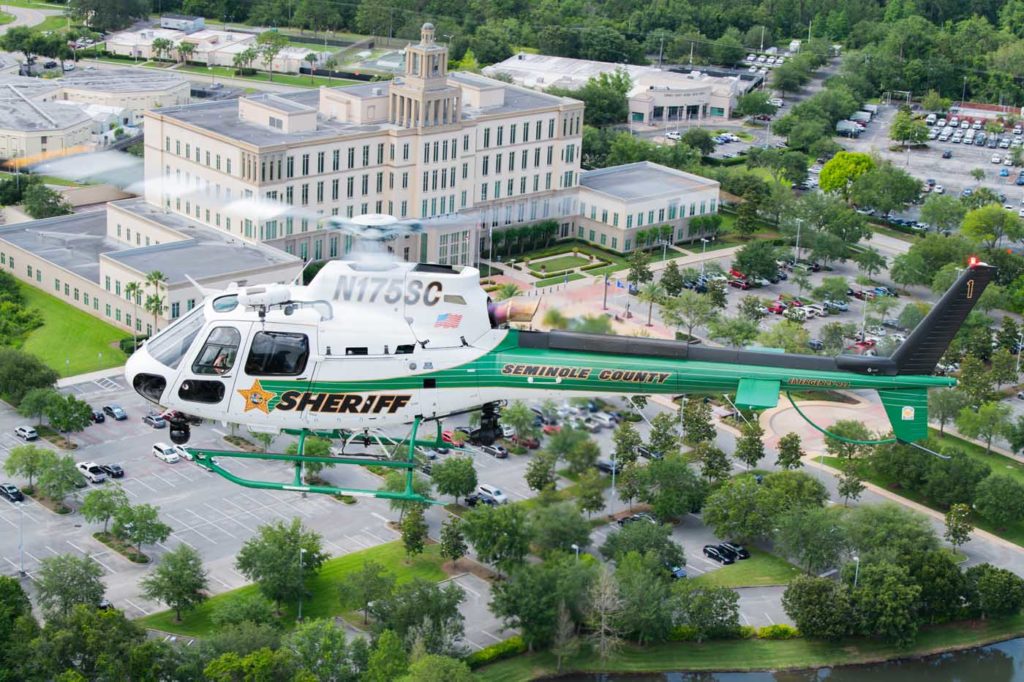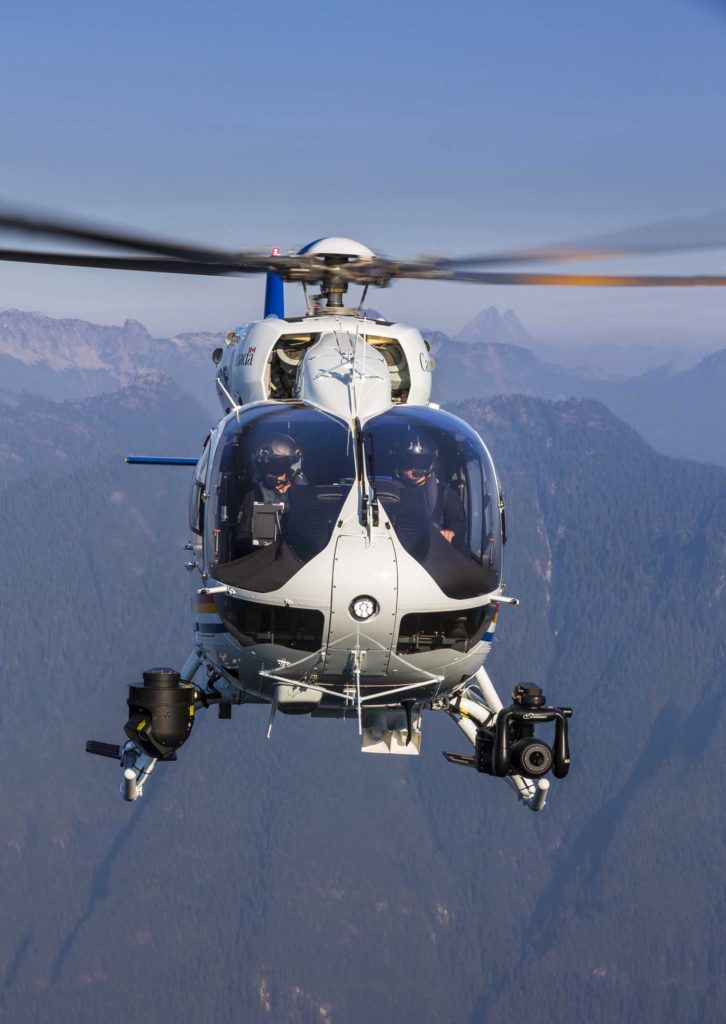Estimated reading time 14 minutes, 50 seconds.
When a gunman opened fire at a birthday party at a San Diego apartment complex in 2017, responding police needed eyes in the sky to see what was happening at the elevated pool area where seven adults had been shot.
Tactical flight officer (TFO) Ryan Welch was airborne that day, operating the electro-optical/infrared (EO/IR) sensor mounted to the underside of one of the San Diego Police Department’s Airbus AS350 B3 helicopters. Before officers arrived at the University City apartment building, before even the helicopter could be considered “on scene,” Welch was able to view the scene and begin to collect information for ground units speeding toward the shooting.

Welch and his pilot were inbound to an active shooter incident where the still-armed suspect posed a danger to bystanders, officers on the ground and potentially to the helicopter itself. But the range and stability of the helicopter’s sensor system allowed the aviation unit to provide an eagle-eye view, with extreme clarity and accuracy, to ground units while keeping well out of range of ground fire.
“We had to get really steep, because we were looking down between two buildings,” Welch told Valor in a recent interview. “That allowed us to keep that suspect in sight and also relay information to officers on the ground who couldn’t see him due to the fact it was an elevated pool deck. . . . Something we normally don’t do: We were able to put the helicopter into a hover and still maintain that steep angle looking down between large apartment buildings.”
Officers eventually were able to confront the suspected shooter, who raised his weapon at them and was shot dead.

On another occasion, aviation support was called to a report of a man threatening a neighbor with a semi-automatic rifle. Similarly to the University City shooting, responding officers needed information on the suspect, now out in the street brandishing the weapon, before they potentially drove into a hail of gunfire.
“The guy was firing off an SKS rifle,” Welch said. “He was threatening a neighbor with it and then ended up in the middle of the street. He saw the helicopter and pointed the rifle at the helicopter and actually fired off a round. Due to the fact that we are able to fly higher, we’re able to offset and keep eyes on the guy the whole time without him being able to hit us.”
“Flight safety is key; flight crew safety is key and the new cameras, obviously, offer that,” Welch added.
Staying left
Modern helicopter-mounted EO/IR sensors are so capable and advantageous to policework that the technology may have kept Welch in the left seat.

“I continue to pass up any kind of pilot position because I absolutely love the tactical flight officer position,” Welch said. “I’ve been up there for eight years. . . . I sit left seat every mission and operate the FLIR and work with the troops on the ground.”
San Diego’s Police Department Air Support Unit has 13 officers: nine pilots and four TFOs. They operate three 2006-vintage AS350 B3 AStar helicopters and one Airbus H125 that entered service in 2020. The aircraft are equipped with FLIR Star SAFIRE 380-HDc EO/IR imaging systems. Each includes a high-definition color camera, spotter scope and IR camera in a single 65-pound (29.5 kilogram), 14.6-inch (37 centimeter) turret. San Diego has integrated its sensors with Aero Computers’ UC6000 moving map system and Avalex external digital video recorders.
“We’re getting on scene a lot sooner,” Welch said. “We’re reaching out and touching people from further away and getting that environment on the screen sooner. We can catch people from three, four miles away and sometimes if the angles are right, we’re watching a guy from six miles away scooting out of a scene and we are able to provide that tactical update a lot sooner to where they have no idea that we see them.”

As soon as the aircraft is inbound, the tactical flight officer will begin asking direct, specific questions about the scene including the suspect’s description and direction of travel. Once they know what to look for, the TFO begins a street sweep to find and zoom in on the person they are looking for before officers on the ground or even the helicopter itself is actually at the scene.
“When responding to radio calls, especially ones with a suspect still on scene or last seen leaving the scene, with the new technology we are able to get the tactical environment on camera from a lot further away. There are often times we are able to see suspects from three to four miles away, and sometimes even up to six miles away if the approach angles are just right. This allows us to have eyes on the suspect before they have a chance to see or hear us.”
Flight paramedic John Oldham also serves as a TFO for the Volusia County, Florida, Sheriff’s Office. The county’s aviation unit flies a trio of Bell 407s and the patrol aircraft is rarely without its Wescam MX-10.

During a routine patrol flight over the largely swampy county, also home to Daytona Beach, Oldham’s helicopter was called to assist with finding a suspect vehicle stopped in a tree-lined parking lot. Officers on the ground wanted as much information as possible on where and how the car was parked before approaching. While the helicopter pilot orbited a safe distance from the car, Oldham trained the MX-10 on the car and began describing the situation to inbound patrol cars. Once contact was made without incident, the helicopter moved on to another call.
“We want the pilots to just pay attention and fly,” flight paramedic Oldham said. “So I do most of the spotting and communication with the ground and towers.”
Several recent advanced features make life easier for both the helicopter pilot and the tactical flight officer operating the camera. One is a “measuring stick” that allows for very accurate calculations of the distance between objects in the viewfinder. From a mile out, a TFO can tell an officer on the ground that he or she is a certain number of feet from a suspect based on information provided by the camera, as opposed to guessing based on context like car-lengths, Welch said.
In midflight, the TFO can fire a laser to a point on the full-color moving-map display and the camera will lock onto that spot without deviation, lessening the workload for both the TFO and the pilot, who is in charge of pointing the aperture.
“It used to be that you were fighting the camera, or the helicopter was fighting the camera and keeping what you wanted to see in the picture was difficult and you would just put it down and go right out the window,” meaning abandoning the helicopter’s sensors in favor of the good-old human eyeball.

New sensors “reduce your workload so you can start working the tactical environment versus fighting a camera to maintain a clean image,” Welch said.
Becoming the mission
Few airborne law enforcement (ALE) missions are flown without some brand of EO/IR sensor on board these days. Their reach has widened an aviation unit’s operational window from 400 or 500 feet (120 or 150 meters) to 2,000 feet (600 m) or even 6,000 feet (1,830 m) at the extreme, said Brian Spillane, U.S. ALE sales manager for FLIR Systems.
“I’ve seen the product evolve from an add-on to the mission to actually becoming the mission, so much so that they won’t launch an aircraft without the FLIR on board,” Spillane said. “There are some instances where agencies will still look out the window with a pair of binoculars but they are few and far between. Even the searchlight is not as critical in most situations as it was at one point.”
“The altitudes are increasing,” he added. “The distances to target for beginning the mission is increasing and for those reasons, the demand on the camera — maybe reverse it — because of the capabilities of the camera, it is driving changes in their mission.”

Integration of a modern sensor turret with a color display and moving map system can greatly increase situational awareness. Companies like L3Harris Wescam and FLIR have dramatically reduced the size and weight of what were initially bulky military-specific sensors while improving capability and making the suites more affordable.
“Having an EO/IR camera mounted to an aircraft has been a step forward in airborne law enforcement, but the greatest benefit is fully realized when an EO/IR systems and the modern moving map are integrated together,” said Cameron McKenzie, vice president of government sales and business development for Wescam, a division of L3Harris Technologies.

“Once complete, there is no doubt that the integration of these technologies provides the pilot and tactical flight officer with unsurpassed situational awareness that has not been achievable in the past,” McKenzie told Valor. “This has proven to be transformational for the airborne law enforcement sector. Crews can ‘be on scene’ from miles out as they can see the location and have confidence they are looking at the right place. Previously they needed to get above the call to orient themselves and verify the correct location.”
Sensor options
Law enforcement customers typically go for lighter-weight systems like the Wescam MX-10 and FLIR 380HDc with day and night capabilities and advanced software-defined processing options. Wescam’s Advanced Video Tracker (AVT) software provides operators the ability to automatically keep eyes on targets like speeding vehicles without continuous manual adjustment.
“This capability allows an officer to focus primarily on their mission, not on the sensor,” McKenzie said. “Another common capability for ALE operators is the searchlight interface, which allows the turret to slew a searchlight to track with the field-of-view providing illumination on target.”
Military forces typically have larger fleets with multiple mission profiles that have longer-range requirements and prefer a sensor package such as the Wescam MX-15 or MX-20, McKenzie said. These larger systems have advanced payload options like laser illuminators and laser designators but provide a larger capacity and longer-range performance, which allows military users to adapt to evolving mission requirements.

Search-and-rescue teams often purchase mid-size systems that offer standard daylight optics with high-resolution imagery during daytime conditions. Particularly prized in SAR operations are medium-wave infrared imagers that highlight human body heat at night or when lost in lakes and rivers, snow covered terrain, or other hazardous environmental conditions, McKenzie said.
Regardless of the size, technologies initially developed for military applications have been made more affordable over time to the point they are widely adopted by civil law enforcement agencies and first responders, Spillane said.

“We’ve been able to add capability that would be available in a turret nearly double the size and weight,” Spillane said. “Initially it was a searchlight, a map book, a pair of binoculars out the helicopter window, which at the time was a big capability improvement for law enforcement. Now, they can buy a $3 million helicopter, but it doesn’t go in the air without the camera. The whole reason for its existence is as a means to get that camera in the air — and the officers, too.”

